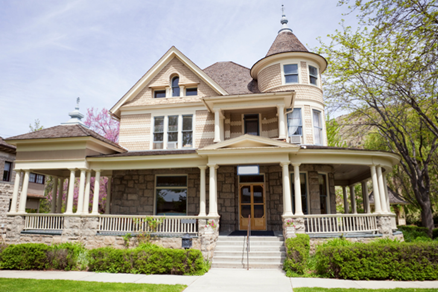| 7 Considerations When Buying an Older Home |
| |
 There are many benefits to purchasing an older home—you will get character, and could pay a lower price upfront. You may even see potential to renovate an older home into the modern, beautiful home of your dreams. There are many benefits to purchasing an older home—you will get character, and could pay a lower price upfront. You may even see potential to renovate an older home into the modern, beautiful home of your dreams.
Before you take the plunge and put a down payment on an older home, however, there are some specific things you should look for during the inspection process:
Check for electrical issues.
The electrical systems in older homes often were not designed to keep up with the amount of electricity typical homeowners consume today. Be sure that everything is up to code - have an electrician inspect the building before you close on the purchase. Rewiring an entire home can be extremely expensive and will probably make that lower purchase price a little less tempting.
Make sure HVAC systems are efficient.
Take the time to bring in an expert to inspect the home's HVAC system. If the home utilizes a furnace, make sure it's in safe and effective working condition. Consult a professional about any plans you have to bring in new heating/cooling units so you know which would work best in terms of upfront cost and long-term savings.
Ask the age of the roof.
Find out when the roof was last replaced and exactly how it was done. Are there loose shingles or leaks that will need to be addressed immediately? Note the pitch of the roof and the types of materials used. A composite shingle roof will cost less to replace than a clay tile or slate roof. The pitch of the roof can also drive up costs—a steep roof may be challenging to replace and repair.
Pay attention to the foundation.
The entire house sits on the foundation, so it's important to address any issues head-on to keep the property safe and livable. Older homes may have foundations that are cracked, uneven, sunken or have been damaged over time and need repair. Bring in a structural engineer to closely inspect the foundation; these kinds of issues are one of the costliest repairs and aren't always fixable in extreme cases.
Test for lead paint.
Always ask to test for lead paint. Exposure to lead can cause a long list of negative health effects and is particularly dangerous to children and pregnant women. Lead paint was banned in the U.S. in 1978, so if the home was built before then, there is a higher chance that lead paint was used.
Consider the plumbing.
Assuming the original systems have not been replaced, you can look into the most common plumbing materials used for the decade the home was built. For example, in the 1950s, clay lines were often used, which tend to corrode and crack. In the 1980s, many plumbing systems were built using polybutylene (PB) piping, which degrades at a rapid rate and can lead to burst pipes. Don't be afraid to turn to a professional for their opinion.
Plan for upgrades.
No matter what the condition, plan for upgrades in the coming years. If there are no major issues that need your immediate attention, it's safe to assume there will be smaller repairs that come up as time goes on.
Purchasing an older home can be an exciting and enticing opportunity, but it's important to understand exactly what you're buying. Do your due diligence and make sure to have the home inspected by an inspector who has experience with older houses.
Adapted from a blog by Brentnie Daggett on RISMedia’s Housecall.
This material is meant for general illustration and/or informational purposes only. Although the information has been gathered from sources believed to be reliable, no representation is made as to its accuracy. This material is not intended to be construed as legal, tax or investment advice. You are encouraged to consult your legal, tax or investment professional for specific advice.
Click on any icon below to share this article:
RISMedia welcomes your questions and comments. Send your e-mail to: realestatemagazinefeedback@rismedia.com.
Copyright© 2024 RISMedia, The Leader in Real Estate Information Systems and Real Estate News. All Rights Reserved. This material may not be republished without permission.
|
|